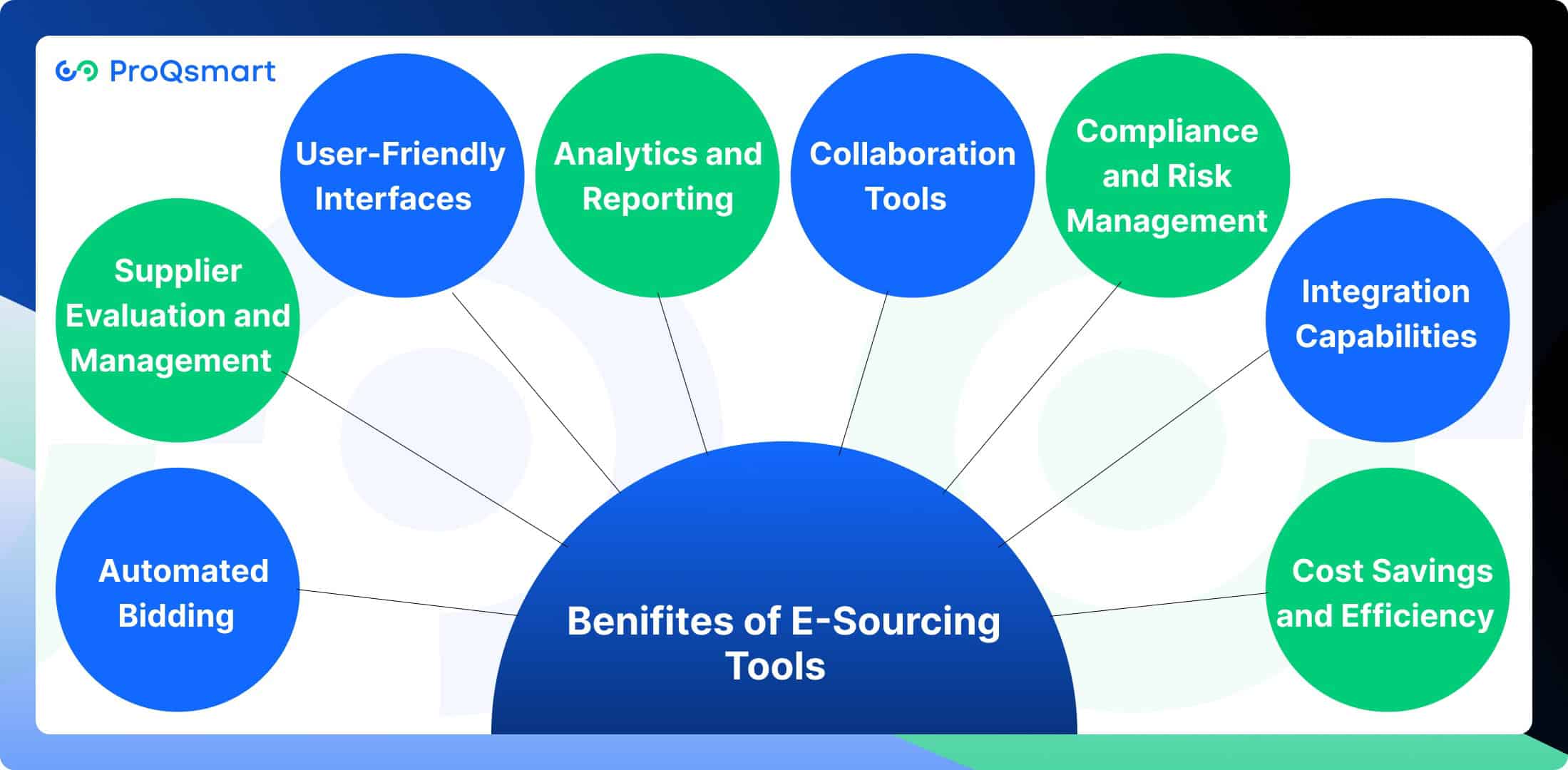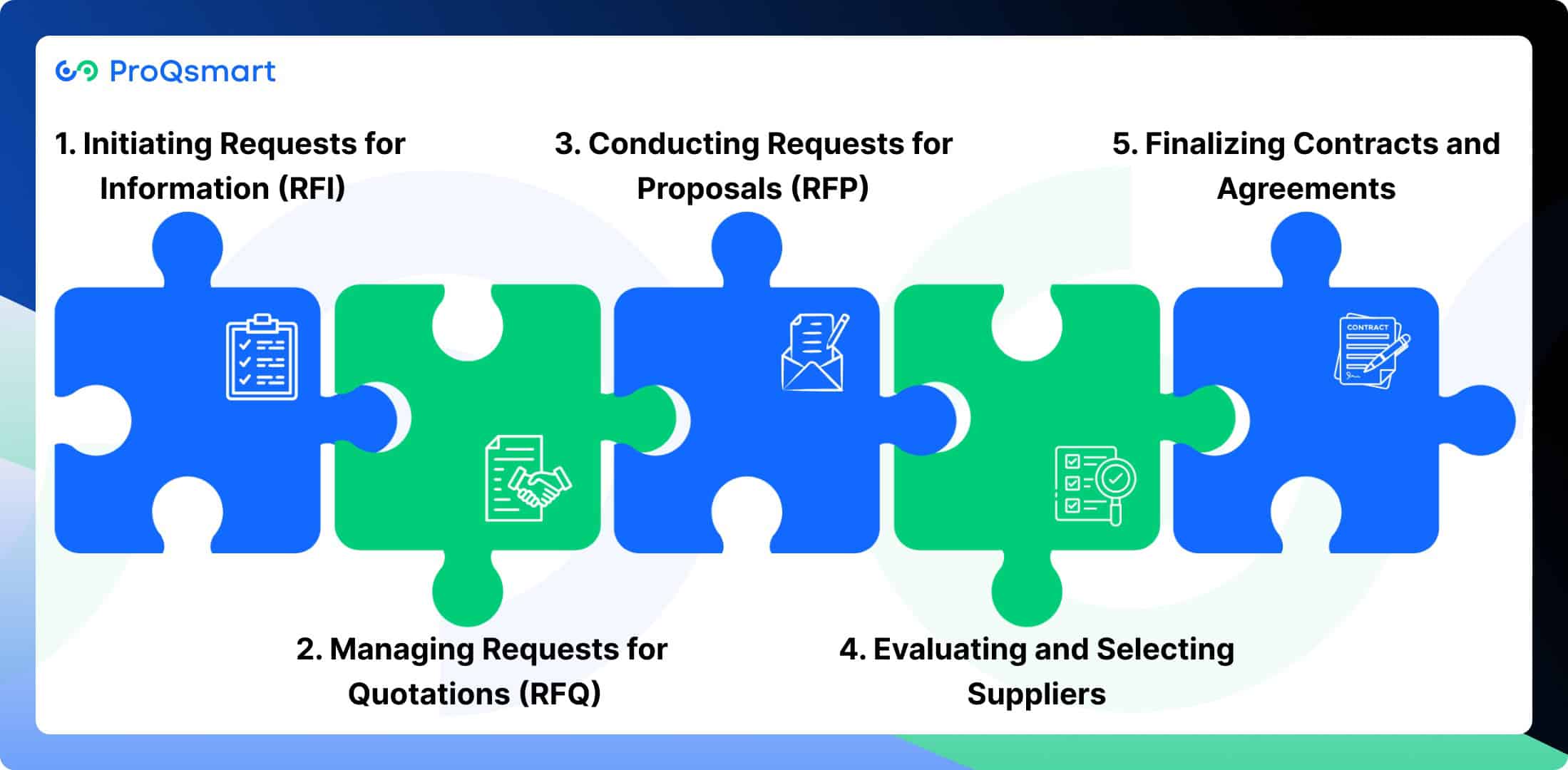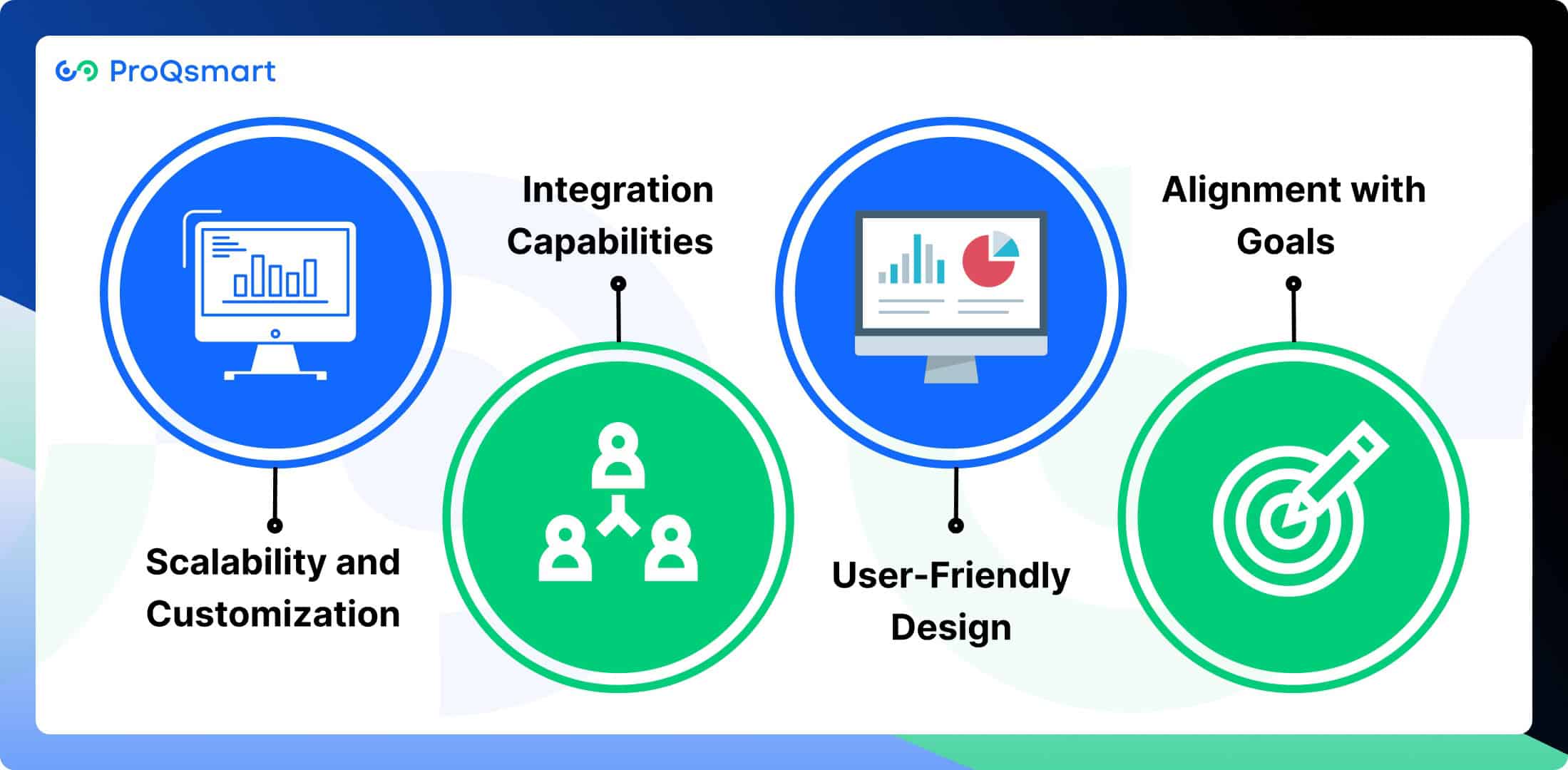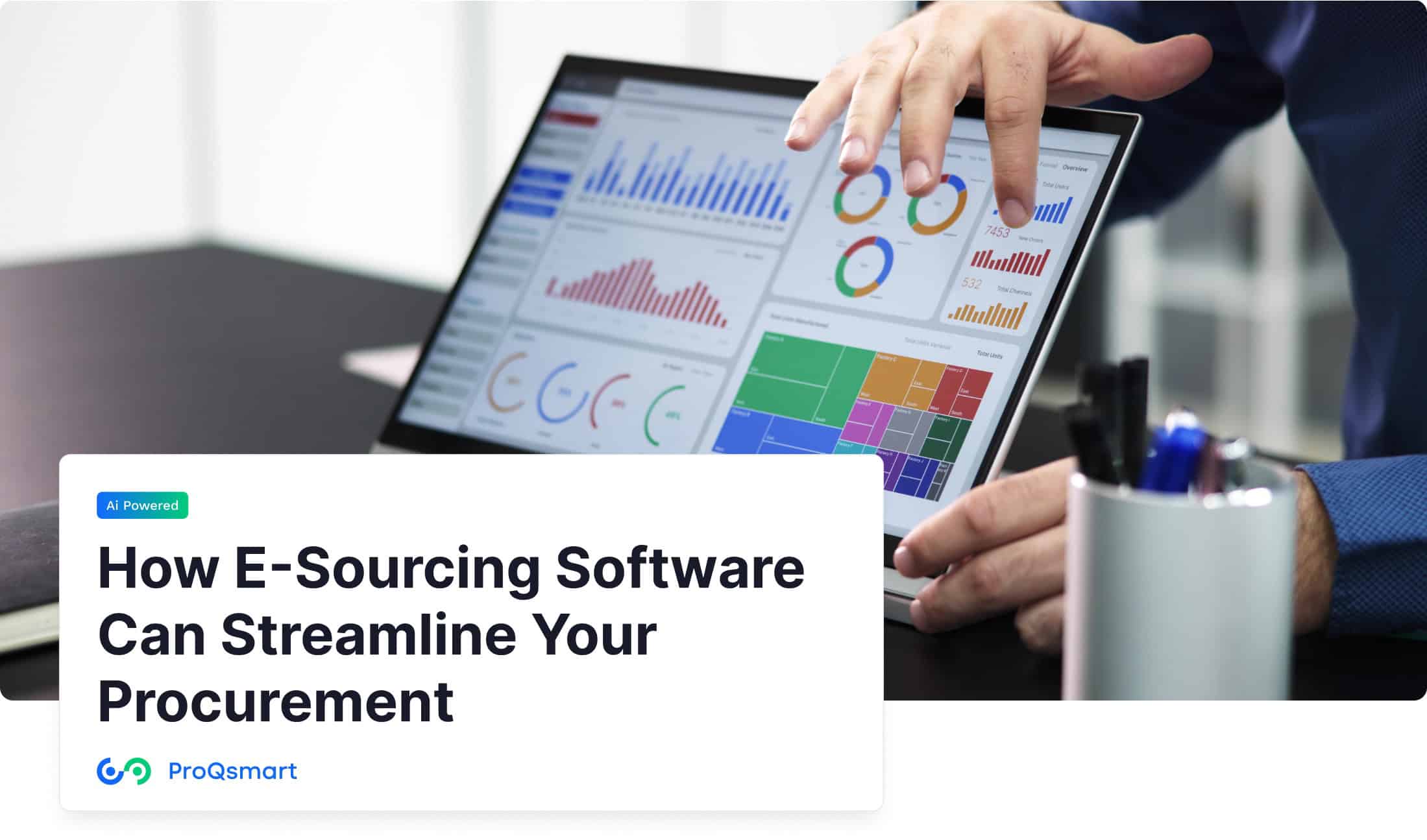When procurement leaders adopt e-sourcing, they unlock a new level of efficiency and transparency in their operations. By leveraging digital marketplaces, you can streamline the process of identifying, selecting, comparing, and negotiating with suppliers. With access to real-time data, e-sourcing empowers you to make well-informed decisions, optimize costs, and maximize savings.
This innovative and collaborative approach not only strengthens supplier relationships but also ensures regulatory compliance and fosters opportunities for innovation. By embracing e-sourcing, you can significantly accelerate internal processes, enhance cross-team collaboration, and pave the way for sustainable procurement practices.
Moreover, modern digital tools are revolutionizing procurement, enabling professionals to shift their focus from manual tasks to strategic initiatives. As you integrate these technologies, the potential to transform operations and align procurement with broader business objectives becomes an achievable reality.
Discover how e-sourcing can elevate your procurement strategies and deliver measurable, impactful results for your organization.
What is E-Sourcing in Procurement?
E-sourcing transitions the entire procurement process online, utilizing digital tools to modularize and enhance sourcing activities. This shift moves us from traditional paper-based methods to a more connected and automated workflow. By leveraging electronic tools, organizations can significantly improve contract and supplier relationship management, gaining better visibility into supplier performance and adherence to contracts. This, in turn, enhances the overall efficiency of procurement operations.Through technology, e-sourcing effectively utilizes available data, providing real-time insights and analysis that inform purchasing decisions. It represents a modern approach to procurement that focuses on identifying, evaluating, and selecting potential suppliers via web-based platforms. As an essential element of contemporary procurement strategies, e-sourcing harnesses technology to streamline and optimize the sourcing process, making it more efficient and effective.
Difference Between Traditional Sourcing and E-Sourcing
Aspect | Traditional Sourcing | e-sourcing |
Method | Manual and paper-based | Digital and AI Driven |
Speed | Slower due to manual processes | Fast, thanks to online tools |
Accuracy | Prone to human error | Enhanced accuracy with automation |
Communication | Often delayed | Real-time communication |
Traditional sourcing without technology is inefficient and time-consuming with many manual processes that are more error-prone. E-Sourcing accelerates these processes further through its digital approach to sourcing, providing a higher level of precision.
Through technology, e-Sourcing creates a more engaging and efficient supplier environment, along with better data to drive decisions. Real-time collaboration is an important aspect of e-sourcing to have. It allows for continuous communication between suppliers and buyers, creating a more streamlined process for negotiations and revisions than traditional procurement.
Key Features and Benifites of E-Sourcing Tools

E-sourcing tools are designed to simplify and enhance the procurement process by offering a range of features that drive efficiency, transparency, and strategic decision-making. Below are the key features that make e-sourcing tools indispensable for modern procurement professionals:
1. Automated Bidding
Streamlines the bidding process by automating tasks such as bid collection, evaluation, and comparison.
Enables reverse auctions, where suppliers compete in real-time, driving cost savings and better pricing.
Reduces manual effort and minimizes errors, ensuring a faster and more accurate procurement cycle.
2. Supplier Evaluation and Management
Provides tools to assess and compare suppliers based on predefined criteria such as quality, cost, reliability, and performance.
Centralizes supplier data, making it easier to track performance over time and identify top-performing vendors.
Facilitates better decision-making by offering insights into supplier capabilities and risks.
3. User-Friendly Interfaces
- Designed with intuitive dashboards and navigation to ensure ease of use for procurement professionals.
- Reduces the need for technical expertise, allowing teams to focus on strategic tasks rather than software complexities.
- Enhances adoption rates and ensures seamless integration into existing workflows.
4. Analytics and Reporting
Delivers real-time data and actionable insights into market trends, supplier performance, and procurement spend.
Enables predictive analytics to forecast outcomes and optimize sourcing strategies.
Customizable reports and dashboards provide visibility into key metrics, supporting data-driven decision-making.
5. Collaboration Tools
Facilitates communication and collaboration between procurement teams, suppliers, and stakeholders.
Supports document sharing, feedback collection, and real-time updates, ensuring transparency throughout the sourcing process.
Strengthens supplier relationships by fostering open and efficient communication.
6. Compliance and Risk Management
Ensures adherence to regulatory requirements and internal policies through automated compliance checks.
Identifies and mitigates risks by monitoring supplier performance and market conditions.
Maintains audit trails for transparency and accountability.
7. Integration Capabilities
- Seamlessly integrates with existing ERP, procurement, and financial systems for a unified workflow.
- Enhances data accuracy and reduces duplication of efforts across platforms.
- Supports scalability, allowing organizations to expand their procurement operations without disruption.
8. Cost Savings and Efficiency
Optimizes procurement spend by identifying cost-saving opportunities through competitive bidding and supplier negotiations.
Reduces cycle times by automating repetitive tasks and streamlining workflows.
Frees up procurement professionals to focus on strategic initiatives rather than administrative tasks.
Understanding the e-sourcing Process

The e-sourcing process is a standardized way to conduct procurement that improves efficiency and transparency every step of the way. It’s a multi-step process, with each step critical in realizing successful procurement results.
Here’s a breakdown of the main stages:
Request for Information (RFI)
Request for Quotation (RFQ)
Request for Proposal (RFP)
Evaluation and Selection
Contract Finalization
1. Initiating Requests for Information (RFI)
E-sourcing tools have redefined the procurement process, making it more structured, efficient, and transparent. The process typically begins with Initiating Requests for Information (RFI), which serves as the foundation for understanding supplier capabilities and gathering baseline information. RFIs help procurement teams evaluate potential suppliers by asking targeted questions that provide actionable insights into their expertise, offerings, as well as alignment with organizational needs.
This phase is critical for narrowing down the list of suppliers based on their qualifications and initial responses, ensuring that only the most capable candidates move forward in the process. E-sourcing platforms such as ProQsmart, streamline this step by automating the distribution, collection, and also analysis of RFI responses, saving time and improving accuracy.
2. Managing Requests for Quotations (RFQ)
The next step, Managing Requests for Quotations (RFQ), focuses on gathering detailed pricing information from suppliers. RFQs are designed to provide a clear understanding of costs upfront, enabling organizations to compare quotes side by side and maintain control over their budgets. Besides by specifying requirements and evaluation criteria in RFQs, procurement teams ensure that suppliers provide accurate and comparable quotes.
This phase is crucial for measuring the financial impact of procurement decisions and ensuring compliance with budgetary constraints. E-sourcing softwares such as ProQsmart, simplify this process by standardizing responses and enabling quick comparisons, making it easier to identify cost-effective solutions.
3. Conducting Requests for Proposals (RFP)
Once the pricing information is gathered, the process moves to Conducting Requests for Proposals (RFP), which involves soliciting comprehensive proposals from suppliers. RFPs go beyond pricing to evaluate technical capabilities, innovation, and alignment with organizational goals. Clear and well-defined requirements are essential at this stage to ensure that suppliers can also respond appropriately and provide detailed proposals. RFPs significantly fuel competitive bidding, allowing procurement professionals to review multiple proposals and also select the best option based on a holistic evaluation of quality, cost, and value. E-sourcing platforms like ProQsmart, centralize RFP management, making it easier to track submissions, collaborate with stakeholders, and also evaluate proposals efficiently.
“Well-structured RFPs have a lot to recommend them. They lead to better project outcomes, better alignment with project goals, and a greater likelihood that the most qualified contractor is selected”.
Download Editable RFP Template for your industry!
4. Evaluating and Selecting Suppliers
After receiving proposals, the focus shifts to Evaluating and Selecting Suppliers, a critical phase that involves assessing bids based on predefined criteria such as quality, cost, delivery timelines, and risk factors. Correspondingly collaboration among stakeholders is essential to ensure a fair and objective evaluation, incorporating diverse perspectives and expertise. Technology plays a key role here, as e-sourcing tools automate the assessment process, streamline scoring, and enable side-by-side comparisons. This not only speeds up the decision-making process but also ensures that the selected supplier aligns with the organization’s strategic objectives and delivers the best value.
5. Finalizing Contracts and Agreements
The final step is Finalizing Contracts and Agreements, where contracts are awarded to the chosen suppliers. Clear terms and conditions are essential to mitigate risks, ensure compliance, and protect the organization’s interests. E-sourcing platforms offer robust contract management tools that streamline the execution, tracking, and renewal of agreements. Therefore, these tools provide a centralized repository for contract data, improving visibility and control over supplier relationships. By ensuring that contracts are well-defined and easily accessible, organizations can also minimize risks, maintain compliance, and further foster strong supplier partnerships.
How to Achieve Success in E-Sourcing: Learn the Best Practices
Request Formats in e-sourcing
In e-sourcing, different request formats such as RFIs, RFPs, and RFQs have different, specific purposes. RFIs are designed to collect information, RFPs to solicit detailed proposals, and RFQs are for pricing. Providing a common, standardized format improves consistency and clarity, making it easier to compare and evaluate supplier responses side-by-side.
Best practices are specific requirements, clear evaluation criteria, clear and succinct instructions, and having documents that quickly and clearly convey what you need.
Auction Types in e-sourcing
E-Sourcing uses various auction types, such as:
Dutch auction
and more to create competitive pricing and also foster supplier competition. Reverse auctions allow suppliers to outbid each other with increasingly lower prices to secure contracts, whereas Dutch auctions are characterized by offers of decreasing prices.
Moreover, selecting the appropriate auction type supports procurement objectives, maximizing cost savings while increasing supplier engagement and as well as participation.
Automation in Procurement Practices
Automation is a game changer for procurement, streamlining processes and minimizing repetitive work. Automated workflows reduce human errors and both save time and allow procurement to focus on more strategic activities.
By integrating automation—such as ProQsmart’s workflow capabilities—directly into e-sourcing strategies, procurement organizations can achieve greater accuracy, compliance, and overall process effectiveness.
Standardization in Sourcing Processes
Standardizing sourcing processes across the organization not only helps to create consistency and efficiency. It helps you manage and evaluate suppliers more effectively, allowing for a more strategic approach to procurement.
It’s technology that will help them support these more standardized practices, making processes more repeatable, scalable, and execution for the long-term.
How to Choose the Right E-Sourcing Software

Choosing the best e-sourcing tool is a critical decision that can significantly impact your procurement efficiency and overall success. To ensure you select the right solution, several key factors must be carefully considered.
Scalability and Customization
As your organization grows and your procurement needs evolve, the software you choose should be able to scale seamlessly and adapt to new requirements. A flexible platform ensures that it can handle increasing complexity, whether it’s managing a larger supplier base, expanding into new markets, or addressing changing regulatory demands. Customization is equally important, as it allows you to tailor the software to fit your unique processes and workflows, ensuring it aligns perfectly with your organizational goals.
Integration Capabilities
The e-sourcing tool should integrate effortlessly with your existing systems, such as ERP software, financial systems, and other procurement tools. Smooth integration ensures that data flows seamlessly across platforms, reducing manual effort, minimizing errors, and maintaining consistency. This interoperability is key to creating a unified procurement ecosystem that operates efficiently and supports informed decision-making.
User-Friendly Design
The software should feature an intuitive interface that is easy to navigate, even for users with limited technical expertise. A user-friendly design accelerates adoption, reduces the learning curve, and minimizes disruptions during the transition period. When your procurement team can quickly and comfortably use the tool, they can focus on strategic tasks rather than struggling with complex software.
Alignment with Goals
Ultimately, the right e-sourcing tool should be aligned with your specific objectives. By selecting a solution that is customized to your needs, you lay the groundwork for operational success and long-term value. Whether your focus is on cost reduction, supplier relationship management, or compliance, the software should support your goals and drive measurable results
Advanced Features
Modern e-sourcing tools, like ProQsmart, go beyond basic functionalities by offering advanced features such as:
Comprehensive RFx Management
Dynamic e-Auction Capabilities
Advanced Supplier Management
Powerful Analytics & Reporting
Seamless Integration
Automated Bid Management and more.
These capabilities simplify workflows, automate repetitive tasks, and provide actionable insights that enhance decision-making. For example, AI can analyze historical data to predict supplier performance, identify cost-saving opportunities, and optimize procurement strategies. Such features not only improve efficiency but also give your organization a competitive edge.
Future Trends in e-sourcing Technology
Emerging technologies, particularly artificial intelligence (AI) and machine learning, are redefining the capabilities and scope of e-sourcing tools. These advancements are transforming procurement software by enabling advanced data analysis, visualization, and automation of repetitive tasks. As a result, sourcing processes are becoming more efficient, accurate, and strategic.
AI algorithms are now capable of processing vast amounts of supplier data, allowing procurement teams to forecast market trends and also identify optimal sourcing strategies. This capability empowers professionals to make data-driven decisions, reducing the time spent on manual data collection and analysis while enhancing the overall sourcing cycle. Machine learning further refines these predictions by leveraging historical data, continuously improving accuracy and enabling organizations to fine-tune their procurement strategies over time. Platforms like ProQsmart are leading the way in integrating these technologies, offering AI-driven insights and predictive analytics to help organizations stay ahead of the curve. Similarly, staying informed about these technological developments is essential for procurement professionals to optimize their processes and maintain a competitive edge.
Innovations in E-Sourcing Software
Recent innovations in e-sourcing software have focused on enhancing user experience and functionality. Modern platforms now feature intuitive, user-friendly interfaces that simplify navigation and data management, enabling users to access critical information quickly and efficiently. Mobile accessibility has become a standard feature, allowing procurement professionals to manage sourcing activities on the go.
Cloud-based solutions have further revolutionized e-sourcing by enabling real-time collaboration among team members, regardless of their location. Additionally, advanced analytics tools and customizable dashboards provide deeper insights into procurement activities, helping organizations stay agile and responsive to shifting market conditions. ProQsmart exemplifies these innovations, offering a seamless, cloud-based platform with robust analytics and collaboration tools designed to meet the needs of modern procurement teams. Thus, these features are essential for adapting to the evolving needs of procurement teams and ensuring smooth, efficient operations.
Final Remarks
E-sourcing transforms procurement into a more transparent, fair, and inclusive process. It simplifies workflows, reduces costs, and strengthens supplier relationships, empowering organizations to achieve their goals and stay competitive. Besides, by understanding the mechanics of e-sourcing and also leveraging the right tools, procurement professionals can elevate their strategies to new heights. Success lies in adopting proven approaches and staying ahead of emerging trends.
Discover how innovative solutions like ProQsmart can revolutionize your e-sourcing efforts. With advanced features such as AI-driven insights, automated workflows, and real-time analytics, ProQsmart empowers you to create a smarter, more connected procurement landscape. Don’t wait—take the first step toward sustainable results and enhanced efficiency. Book a demo with ProQsmart today!




